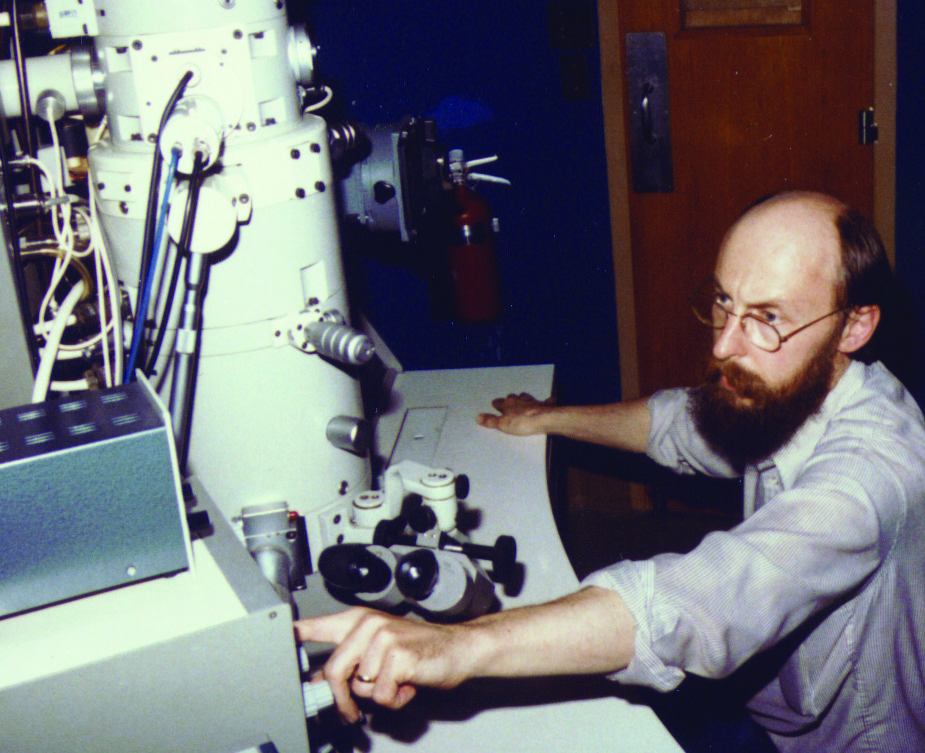Obituary - Douglas (Doug) Dorset (1942 - 2016)
Biography | Publications | Curriculum Vitae | Videos | Slides | Articles | Obituary
Douglas Dorset (1942 - 2016)
ACA RefleXions, Winter 2016

We are sad to announce that Douglas Dorset passed away on 8 December 2016. Son of the late David and Mary (Steele) Dorset, Douglas is survived by his beloved wife of 49 years, Bonnie (Border) Dorset; his son, Erik Lloyd Dorset and his wife, Dörthe, of Leipzig, Germany; his brother, Ted Dorset; his sister, Cheryl, and his two grandchildren, Hannah and Rebecca.
Douglas L. Dorset was born in southeastern Pennsylvania on August 29, 1942. He attended Juniata College majoring in Chemistry and received his PhD degree in Biophysics from the University of Maryland in 1971 with Albert Hybl. He joined Donald Parson’s electron crystallography laboratory at Roswell Park Cancer Institute that year and in 1973 moved to the Medical Foundation of Buffalo-now the Hauptman Woodward Medical Research Institute-where he headed the Electron Diffraction Department and did the fundamental work for which he is best known. Douglas worked on challenging, electron beam- sensitive materials that required strong experimental skills to record representative patterns, and specialized sample preparation methods (e.g. epitaxial growth from multiphase systems).
Douglas moved to ExxonMobil Research and Engineering Company in 2000, investigating the structure of wax crystals and how these change in the presence of modifiers. His research encompassed new methods (e.g. use of maximum entropy techniques with Chris Gilmore and Precession Electron Diffraction) and an array of crystallographic studies on zeolites, polyolefins and other materials. While at ExxonMobil, Douglas quickly assumed a leadership role in the helping to establish a new materials discovery capability. This included many new catalytic materials that showed promise in separations and catalysis applications, and led to many patents in the area.
In the face of those who said that electron diffraction data could not yield quantitative results, he argued long and hard that the problem of dynamical scattering could be overcome and that electron diffraction data could yield ab initio structure determinations. He was responsible for bringing the work on electron crystallography of Vainshtein and Zvyagin in Moscow to the attention of a larger western audience. He developed techniques to overcome the problems of the missing cone of data, dynamical scattering, radiation damage and sample problems. His breadth of applications included polymers, waxes, zeolites, fibers, cholesterol derivatives, fullerenes, phthalocyanines, solid solutions of paraffins and proteins at low resolution. It was typical of his thorough approach that the structural work on long chain compounds was combined with thermal studies to correlate the thermodynamic measurements of phase changes with chain packing. He was the first to carry out an ab initio solution of a membrane protein structure using electron diffraction data at 6 Å resolution. He also published on model validation using least-squares methods.
In 1995 he published Structural Electron Crystallography,the first definitive text on the subject and still an invaluable resource. This book, together with his pioneering work in electron crystallography, laid the foundation for an explosion of the field in the 21st century. Many of his methods are the basis for powerful methods of solving the structure of crystals which are not readily amenable to study using x-ray diffraction methods, employing techniques such as Precession Electron Diffraction, Automated Diffraction Tomography and methods for solving surface structures.
Douglas received the ACA's A.L. Patterson Award in 2002. He was within the top 1% of most-cited authors in the chemical literature, world-wide, 1981-1997 (compilation of David A. Pendlebury, Institute for Scientific Information). He was a member of the IUCr Commission on Electron Diffraction (now Electron Crystallography) 1993 -2002 (Chair 1999-2003), and a Co-Editor of Acta Crystallographica A 1999-2011. He was on the Editorial Board of the Journal of Electron Microscopy Technique, 1988-2010 and Associate Editor, Microscopy Society of America Bulletin, 1992-1994.
Douglas was involved in organizing several of the IUCr international schools of crystallography in Erice, Sicily as well as many other schools on crystallography around the world and numerous sessions at major national and international meetings. He was a good teacher and co-supervised research students in several countries, an enthusiastic supporter of many young researchers - who are now active electron crystallographers. Douglas always had time to discuss the finer points of an analysis, or to mentor others in need of some inspiration. He encouraged many of us in our work during the early years of electron crystallography, when its power was not fully embraced by the global crystallography community. His impressive knowledge of all aspects of crystallography will be remembered by all who met him.

Apart from his interest in science, he was also very interested in politics, culture, history and languages. It was impossible to walk away from a conversation with Douglas without learning something new and acquiring a handful of new inspirations. Discussions with Douglas would start out on a scientific note, then end up encompassing music, languages, typefaces, geography, and a multitude of other fascinating subjects. Music was important in his life, not the least because his son Erik is a professional violinist. He was also an avid collector of old books and would visit antique bookstores in every city that he visited. It was the typography of old books which was his hobby. He taught himself Dutch to better understand the medieval printing techniques, and despite his illness over several years had nearly completed a book on the Dutch printing methods.
His wife Bonnie was at his side always and they nearly made it to their 50th wedding anniversary in 2017. Bonnie was also a dear friend for many of us who met her at numerous crystallography meetings, and a generous host for those who had come from various parts of the world to work with Douglas.
We will miss a dear friend, but will always remember his scientific integrity, knowledge and humor.
Lisa Baugh, Mark Disko, Bill Duax, John Fryer, Sven Hovmöller, William Lamberti, Laurie Marks, Stavros Nicolopoulos, Karl Strohmaier and Xiaodong Zou.
|